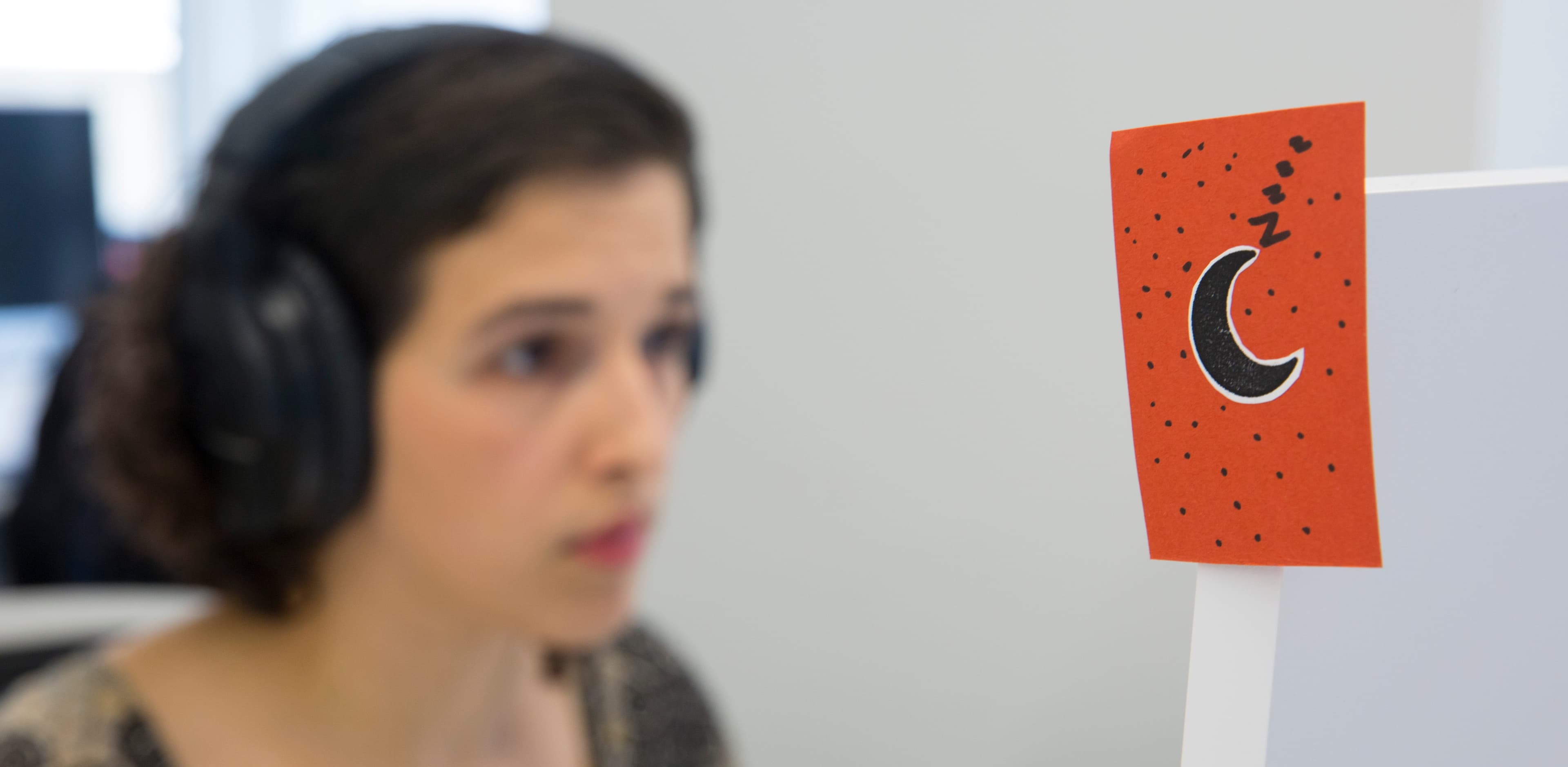Open office floor plans, now the norm in 70% of U.S. workplaces, are designed to promote collaboration, free-flowing ideas, and a spirit of “we’re all in this together” among employees throughout the ranks.
Which is great, except for when you really need to just hunker down and get some work done.
My team at The Muse has experimented with a few approaches to mitigate the research-backed decline in productivity and concentration in an open office, including investing in noise-cancelling headphones, creating a “library” space designated for quiet working time, and allowing regular work from home days.
But we haven’t solved perhaps the biggest pain point, the unscheduled drop-by: Unfortunately, a well-meaning co-worker “just popping by with a super-quick question” means, for the average worker, a break in focus that takes 25 minutes to recover from. Or, in some cases, that the only 20-minute break someone has in between meetings can be quickly overtaken by others’ priorities.
Until recently, when three of my co-workers came up with a plan. They distributed to each team member a piece of Velcro to attach to their monitor and a small piece of red paper. And they announced a new rule: When you’re in focused-work mode and would prefer not to be disturbed, hang up your little sign. When you’re open to impromptu chats, simply remove it.
How has it worked? So far, pretty well. “How’s your day been?” I casually asked my co-worker Ariana this week. “Amazing—this is the first time since I’ve worked here that I got everything on my to-do list done,” she replied. “Those little do-not-disturb signs have been incredible.”
Intrigued, I asked a few others. “I’ve gotten significantly more work done since I started using it,” said another colleague. “Especially in those 15-minute time slots in between meetings—that time is sacred, and you can’t have someone coming up to you if you want to get anything done.”
We’re not the only team to have given this concept a try. Software company 10,000ft found its office’s red/green/yellow system so effective, it created cards that you, too can download and print. Productivity expert Laura Stack recalls a manager at Coca-Cola who put on a red hat when he didn’t want to be disturbed—a simple change that “worked like a charm.” Other companies are investing in products like Kuando’s Busylight and Luxafor, light-up digital devices that sync with your computer, displaying red when you’re using “productive” apps (Skype, Asana, Word, for example) and green when you switch to others (midday Facebook break, anyone?).
Of course, in order for any of these systems to be effective, everyone’s got to play by the rules. If you want to try it, be sure to set guidelines for the whole team: Put the sign up when you don’t want to be interrupted (working on a focused project, say); take it down when you’re open to impromptu chats. And be willing to be the enforcer. “I’ve had to remind everyone that I’m serious about it,” says Maranda Elkin, one of the ringleaders of the system at The Muse. “You have to teach everyone around you that’s how you operate. At first, they might find it annoying, but they’ll understand.”
If you’re struggling from open-office woes, why not give it a try? This one little change could make the workplace a little more workable for your whole team.

